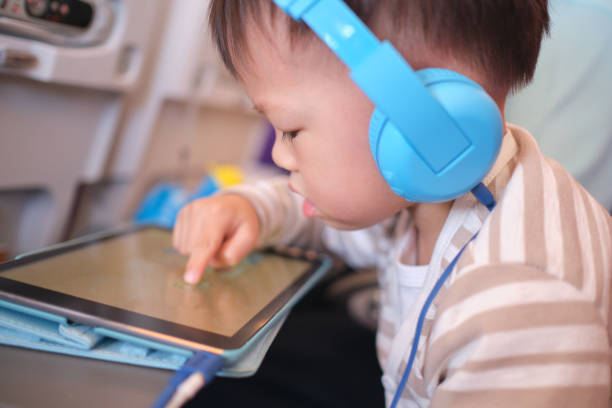Sweden Recommends Limits on Screen Time for Kids Under Two
How much screen time is too much? Sweden says zero for toddlers! Find out how to manage screen time for kids better.
Screen time for kids has become a major topic for parents around the world. With so many children glued to screens, it’s natural to worry about the impact on their health and development. Sweden recently shared new guidelines on how much screen time is appropriate, joining other countries in raising awareness about this important issue.
Sweden’s Screen Time Recommendations
Sweden has taken a clear stance on screen time for kids, recommending that children under the age of two avoid all screens. For toddlers aged two to five, they suggest a maximum of one hour per day, while children aged six to twelve should limit it to two hours. Teenagers are advised not to exceed three hours of screen time daily.

Image from iStock
These guidelines came after research revealed negative effects from excessive screen exposure, such as poor sleep, lack of physical activity, and even depression in children. Sweden’s public health experts believe these recommendations will help prevent such issues, especially as technology continues to play a larger role in children’s lives.
How Other Countries Handle Screen Time
It’s not just Sweden tackling this issue. Many other countries are also encouraging parents to limit screen time for kids. For example, France recommends no screen time for children under three. Other nations, like the United States and Ireland, allow video calls for babies and toddlers to connect with family, while countries like Canada and Australia avoid making exceptions even for this.
These different approaches highlight that there’s no one-size-fits-all rule. However, the message is clear: too much screen time can be harmful, and it’s up to parents to set healthy boundaries.
The Impact of Too Much Screen Time
Why is screen time for kids such a big deal? For starters, spending hours in front of screens reduces the time children spend being physically active. This can lead to a range of health issues, including obesity. Children also miss out on the benefits of outdoor play, which helps develop social skills and physical fitness.

Image from iStock
There’s also a strong link between screen time and mental health. Studies have shown that kids who spend too much time on screens are more likely to suffer from anxiety and depression. Sleep is another area affected—many children who use screens late into the night have trouble falling asleep or staying asleep, which impacts their mood and energy levels.
Practical Tips to Manage Screen Time
Managing screen time for kids doesn’t have to be a constant battle. One way to reduce it is by encouraging outdoor activities. Whether it’s playing in the park or joining a local sports team, getting children involved in physical activities can significantly reduce their screen time.
Setting clear rules at home also helps. For instance, having screen-free times during meals or before bed can create healthier routines. It’s also helpful to lead by example. When parents reduce their own screen time, children are more likely to follow suit.
Another idea is to offer alternatives that engage kids’ creativity. Encourage hobbies like drawing, reading, or playing a musical instrument. These activities keep children entertained without the need for a screen.
Finding Balance with Screen Time
It’s clear that screen time for kids needs to be managed carefully. With guidelines like those from Sweden and other countries, parents have a helpful starting point. The goal isn’t to eliminate screens entirely but to find a balance that supports children’s physical and mental well-being. By setting limits, encouraging outdoor play, and offering creative alternatives, parents can help their children build healthier habits that last a lifetime.
In today’s digital world, screens are unavoidable. But with mindful management, screen time for kids doesn’t have to be a source of worry. Instead, it can be a tool used in moderation, leaving plenty of time for real-world experiences that truly enrich their lives.
ALSO READ:
Screen Time for Toddlers: 7 Negative Impacts of Too Much Screen Time on Children